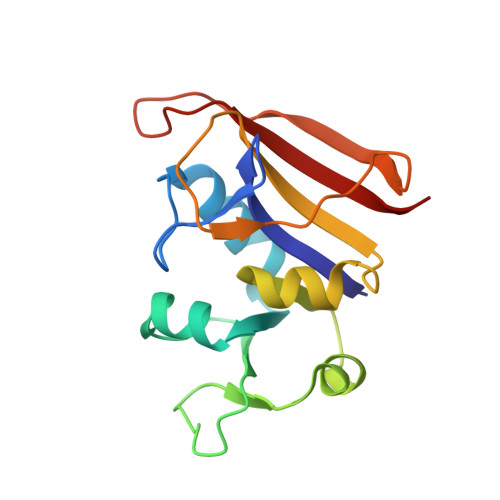Towards the understanding of resistance mechanisms in clinically isolated trimethoprim-resistant, methicillin-resistant Staphylococcus aureus dihydrofolate reductase.
Frey, K.M., Lombardo, M.N., Wright, D.L., Anderson, A.C.(2010) J Struct Biol 170: 93-97
- PubMed: 20026215
- DOI: https://doi.org/10.1016/j.jsb.2009.12.011
- Primary Citation of Related Structures:
3I8A - PubMed Abstract:
Resistance to therapeutics such as trimethoprim-sulfamethoxazole has become an increasing problem in strains of methicillin-resistant Staphylococcus aureus (MRSA). Clinically isolated trimethoprim-resistant strains reveal a double mutation, H30N/F98Y, in dihydrofolate reductase (DHFR). In order to develop novel and effective therapeutics against these resistant strains, we evaluated a series of propargyl-linked antifolate lead compounds for inhibition of the mutant enzyme. For the propargyl-linked antifolates, the F98Y mutation generates minimal (between 1.2- and 6-fold) losses of affinity and the H30N mutation generates greater losses (between 2.4- and 48-fold). Conversely, trimethoprim affinity is largely diminished by the F98Y mutation (36-fold) and is not affected by the H30N mutation. In order to elucidate a mechanism of resistance, we determined a crystal structure of a complex of this double mutant with a lead propargyl-linked antifolate. This structure suggests a resistance mechanism consistent both for the propargyl-linked class of antifolates and for trimethoprim that is based on the loss of a conserved water-mediated hydrogen bond.
Organizational Affiliation:
Department of Pharmaceutical Sciences, University of Connecticut, 69 N. Eagleville Rd., Storrs, CT 06269, USA.
















